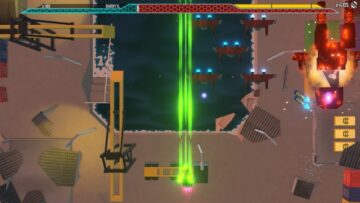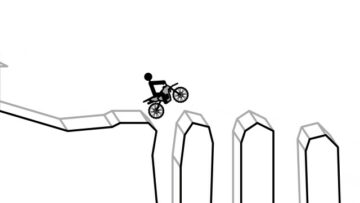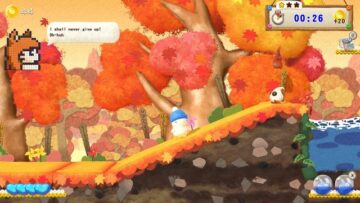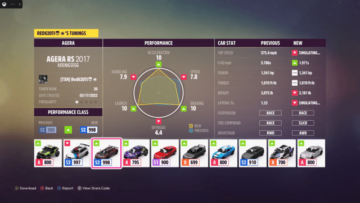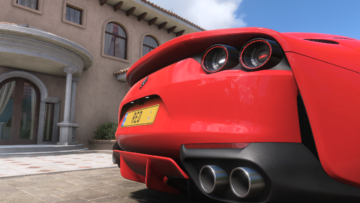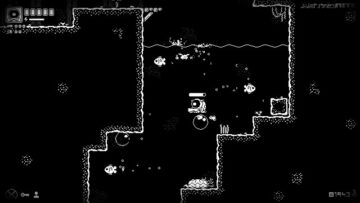Nikoli W keep plucking fruit from their puzzle tree, and there’s no sign that they’re becoming rotten. We’d love to understand how they do it: how do they keep coming up with puzzles at a rate of roughly one per month, without sacrificing quality? It’s a puzzle of its own.
The answer, we suspect, has a lot to do with the template. We’ve had loads of these games now, and not once has the presentation changed. It’s the same twinkly music, the same stuffy, slightly classroom-like interfaces. We suppose there’s no need to fix if it ain’t broken, but you have to wonder how long Nikoli W are going to persist without some jazzy new tunes or a splash of paint.
There’s probably another answer to be found in the similarity between the Nikoli W games. While they all have their own approaches and tactics, there is still a predilection for numbers, squares and lines. That makes them reasonably easy to churn out, we suspect, as colouring in a black square is roughly the same in all of their games.
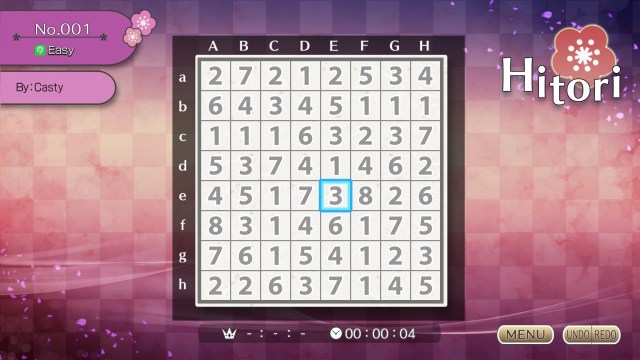

But aside from that, they’re minor miracles. Puzzle by Nikoli W Hitori is yet another game from the publisher that takes the simplest ingredients, yet makes you think in completely different ways. It bakes our noodle, and we’re not convinced that our noodle has been baked this way before.
Explaining a Puzzle by Nikoli W game is never the easiest of challenges, so excuse us if it’s hard to visualise. Okay: imagine a grid covered in numbers (or just look at the screenshots, which will probably be easier). Now, these numbers have a Sudoku-like quality: you can only have one of each number in any given column or row (diagonals don’t count). Unlike Sudoku, however, the numbers are already in the grid for you, and errors have been made. Your job is to correct those errors.
That means ‘blacking out’ certain numbers. By turning a square and number black, they are no longer considered part of the puzzle. But which one to black out, we hear you ask from the back? Well, that’s when the next rule comes into play: you can’t have two black squares next to each other. That’s helpful information. Imagine you have three ‘4’s in a row. Since only one of them can be white and therefore active, two of them must be black. Since two black squares cannot touch each other, that must mean that the two outer 4s are black.
You can now do some tidying up. The squares surrounding a black square must be white, since no two black squares can touch. So, you can mark them white, secure in the knowledge that they are part of the puzzle. Which is yet more information, since a white 3 that is in the same row or column as other 3s will lead to a chain reaction. Those other 3s must be black, and you can start painting them too. And so the puzzle goes on.
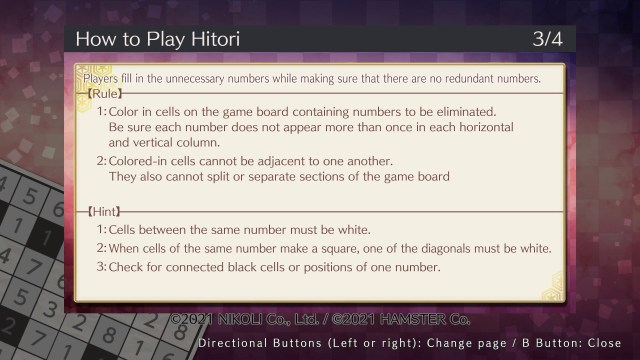

These rules will only get you so far. Another one is that the white squares can never be ‘widowed’, i.e. they must ‘chain up’ to make one long sequence of white squares, without any islands of cut-off squares. This is a common Nikoli W rule, and it helps to tidy up yet more squares.
There are other assumptions that you can make, and these are learned over time. A square of four numbers in a corner is telltale, because you can’t ‘widow’ the number that is in the corner. You must colour them in so that the corner is black. There are others involving two numbers together, and multiple pairs of numbers in a row, but you’ll have to figure those out for yourself. Mostly because they’re a bugger to communicate without a whiteboard and a laser pointer.
Actually, it’s on this topic that Puzzle by Nikoli W Hitori falls down somewhat. The tutorial, normally so good in these games, omits important approaches that would have made things easier. The first few puzzles – particularly if you stray into the Normal difficulty – are the most challenging, simply because you won’t have picked up on some shorthands that make the game easier. I often wonder if Nikoli W games would benefit from Advanced tutorialisation to avoid these instances.
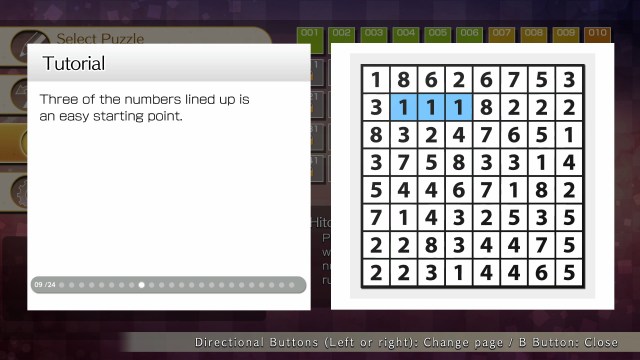

But you get there, and when we say ‘you get there’, we mean ‘you get regularly bamboozled and wonder if there is a true solution’. Puzzle by Nikoli W Hitori is hard, or at least it can be. We found it this hard, not because of the core rules – spotting number-duplicates and surrounding black squares are both easy – but because of the fringe rule of keeping a consistent white path at all times. That’s the toughie: not only is it hard to visualise that path, but projecting forward several steps to see if it gets blocked is simultaneously essential and really bloody hard.
If you can fit all of that into the cargo-hold of your noggin, then Puzzle by Nikoli W Hitori is really rather good. It’s not the best in the series: we tend to enjoy the swifter, more elegant puzzle types. But it is demanding with a satisfying sense of reward.
We’ve got a queue of Hitori puzzles to come back to, as they kicked our ass the first time. That tells you everything you need to know. Not only are these cruel little puzzles that will test your mettle, but they’re good enough to bookmark and try again.
- SEO Powered Content & PR Distribution. Get Amplified Today.
- PlatoData.Network Vertical Generative Ai. Empower Yourself. Access Here.
- PlatoAiStream. Web3 Intelligence. Knowledge Amplified. Access Here.
- PlatoESG. Automotive / EVs, Carbon, CleanTech, Energy, Environment, Solar, Waste Management. Access Here.
- BlockOffsets. Modernizing Environmental Offset Ownership. Access Here.
- Source: https://www.thexboxhub.com/puzzle-by-nikoli-w-hitori-review/
- 1
- 12
- a
- About
- active
- advanced
- again
- AI
- All
- already
- an
- and
- Another
- answer
- any
- approaches
- ARE
- as
- At
- avoid
- back
- BE
- because
- becoming
- been
- before
- benefit
- BEST
- Better
- between
- Black
- blocked
- both
- broken
- but
- by
- CAN
- certain
- chain
- challenges
- challenging
- changed
- Column
- come
- comes
- coming
- Common
- communicate
- completely
- considered
- consistent
- content
- convinced
- Core
- corner
- correct
- covered
- demanding
- different
- difficulty
- do
- down
- e
- each
- easier
- easy
- end
- enjoy
- enough
- Enter
- ERRORS
- essential
- everything
- far
- few
- Figure
- First
- first time
- fit
- Fix
- For
- Forward
- four
- from
- game
- Games
- Get
- given
- goes
- going
- Gold
- good
- Grid
- had
- Hard
- has
- Have
- hear
- helpful
- helps
- How
- How To
- however
- HTTPS
- i
- if
- imagine
- important
- in
- information
- interfaces
- into
- involving
- Is
- IT
- ITS
- Job
- jpg
- just
- keep
- keeping
- know
- knowledge
- laser
- lead
- learned
- least
- lines
- Little
- Live
- loads
- Long
- longer
- Look
- lot
- love
- made
- make
- MAKES
- mark
- mean
- means
- minor
- Month
- more
- most
- mostly
- multiple
- Music
- must
- need
- never
- New
- Next
- no
- normal
- normally
- not
- now
- number
- numbers
- of
- often
- Okay
- on
- once
- One
- only
- or
- Other
- Others
- our
- out
- over
- own
- paint
- painting
- pairs
- part
- particularly
- path
- per
- Picked
- plato
- plato data intelligence
- platodata
- platogaming
- play
- presentation
- probably
- Publisher
- Puzzle
- quality
- rate
- rather
- reaction
- really
- regularly
- review
- reward
- roughly
- Rule
- rules
- same
- satisfying
- say
- secure
- see
- sense
- Series
- several
- sign
- Simply
- since
- So
- so Far
- some
- spotting
- square
- start
- Steps
- still
- Stray
- subscription
- surrounding
- tactics
- takes
- tells
- test
- that
- The
- The Game
- their
- Them
- then
- there
- therefore
- These
- they
- things
- think
- this
- those
- three
- time
- times
- to
- together
- too
- topic
- touch
- tree
- true
- try
- tunes
- turning
- tutorial
- two
- types
- Understand
- unlike
- up
- us
- W
- want
- way
- ways
- we
- well
- when
- while
- white
- will
- win
- with
- without
- would
- xbox
- Xbox Live
- Xbox Live Gold
- yet
- you
- your
- yourself
- zephyrnet






